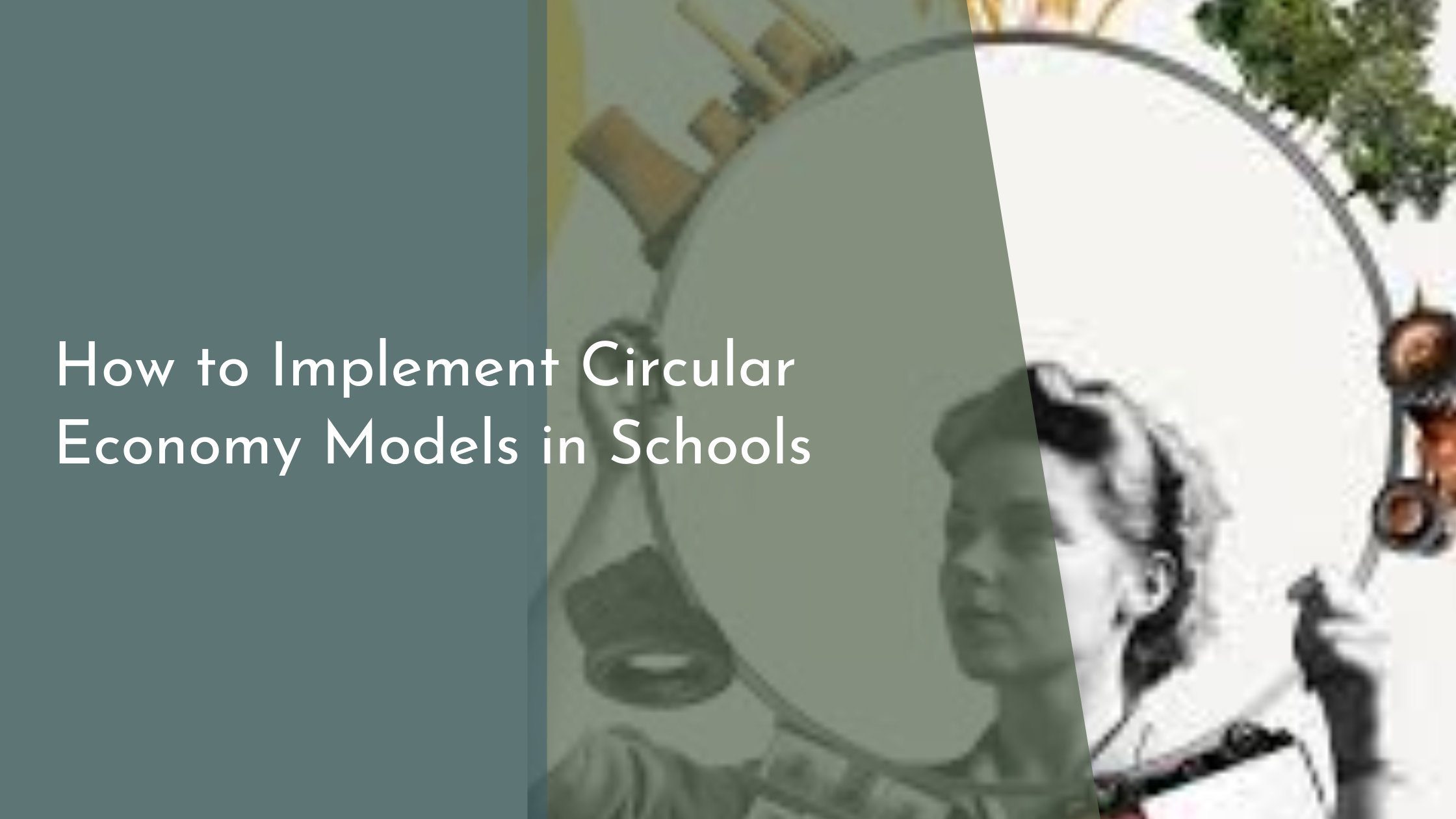How to Implement Circular Economy Models in Schools
The concept of a circular economy has gained significant traction as a sustainable alternative to the traditional linear economy. This model focuses on minimizing waste, making the most of resources, and creating a closed-loop system where materials are reused and recycled. Implementing circular economy models in schools is a forward-thinking approach to instilling sustainable values in younger generations. This article explores how schools can introduce these innovative principles, engage students, and overcome common challenges while celebrating their successes.
Understanding Circular Economy Principles in Schools
To adopt circular economy models in schools, it’s crucial first to understand the fundamental principles behind this approach. At its core, the circular economy aims to eliminate waste by rethinking the lifecycle of materials. This means focusing on eco-design, recycling, and reusing materials wherever possible. Schools can incorporate these principles into their curriculum by introducing subjects that cover sustainability, environmental science, and eco-friendly practices. By integrating these topics into everyday learning, students can develop a deep understanding of how their actions impact the environment.
Furthermore, schools can serve as a microcosm for circular economies by encouraging students to observe and participate in sustainable practices within their school environment. For instance, schools can establish composting stations, recycling bins, and resource-sharing programs. These hands-on initiatives help students see how the circular economy operates in real life, bridging the gap between theory and practice. By doing so, schools not only teach students the importance of sustainability but also empower them to take action in their communities.
Engaging Students with Interactive Learning
Interactive learning is a powerful tool for engaging students with the principles of the circular economy. By incorporating hands-on projects and activities, educators can capture students’ interest and make the learning experience more dynamic. Projects might include creating art from recycled materials, conducting waste audits of the school, or developing campaigns to reduce waste in the school cafeteria. These activities provide students with tangible examples of how they can contribute to a circular economy.
In addition to hands-on projects, technology can play a vital role in interactive learning about the circular economy. Digital tools and platforms can facilitate gamified learning experiences, such as virtual simulations that allow students to experiment with different waste management strategies. This approach not only makes learning about sustainability fun but also helps students understand the real-world impact of their decisions. By utilizing a mix of traditional and digital learning methods, schools can keep students engaged and enthusiastic about contributing to a sustainable future.
Implementing Practical Circular Initiatives
Implementing practical circular initiatives in schools requires a strategic approach that includes planning, resources, and community involvement. One effective strategy is to start small with manageable projects that gradually expand over time. For example, schools can launch a pilot project focused on reducing paper waste by introducing digital note-taking tools and encouraging double-sided printing. As students and staff become more comfortable with these practices, schools can expand their efforts to include other materials and waste streams.
Another practical initiative is to foster partnerships with local businesses and organizations involved in recycling and sustainability. These partnerships can provide schools with resources, expertise, and support, making it easier to implement circular economy practices. For instance, a school might collaborate with a local composting facility to manage organic waste from the cafeteria. By building a network of community partners, schools can leverage additional resources and support, making sustainable practices more achievable and impactful.
Overcoming Challenges and Celebrating Successes
Implementing circular economy models in schools is not without its challenges. A common obstacle is the need for initial investment in resources and infrastructure, such as recycling bins and composting equipment. Schools may also face resistance from students, staff, or parents who are accustomed to traditional practices. Addressing these challenges requires effective communication and education about the long-term benefits of circular economies. By highlighting success stories and demonstrating the positive impact of these initiatives, schools can garner support and enthusiasm from the entire community.
Celebrating successes is crucial for maintaining momentum and motivation. Schools can host events such as sustainability fairs or student-led presentations to showcase the progress made through circular economy initiatives. Recognizing and rewarding the efforts of students and staff can foster a sense of pride and accomplishment, encouraging further participation in sustainable practices. By focusing on both the challenges and the successes, schools can create a positive, supportive environment that champions the principles of a circular economy.
Incorporating circular economy models in schools is an invaluable investment in the future. By understanding the principles, engaging students through interactive learning, and implementing practical initiatives, schools can play a pivotal role in fostering a generation of environmentally conscious individuals. While challenges will inevitably arise, celebrating successes and maintaining open communication can ensure that these efforts are sustainable and impactful. As schools embrace the circular economy, they lay the foundation for a greener, more sustainable world, inspiring students to continue these practices beyond the classroom and into their everyday lives.

